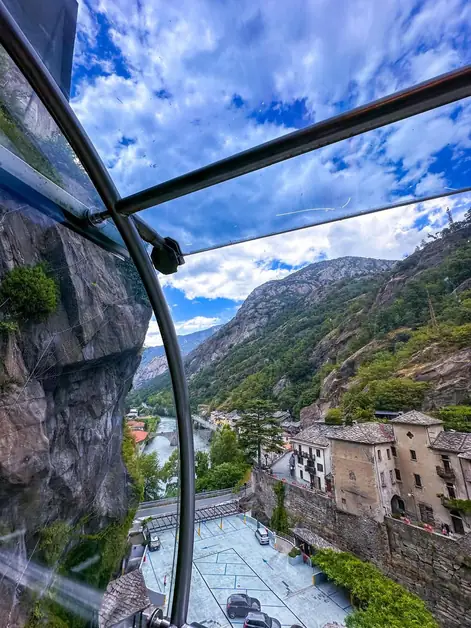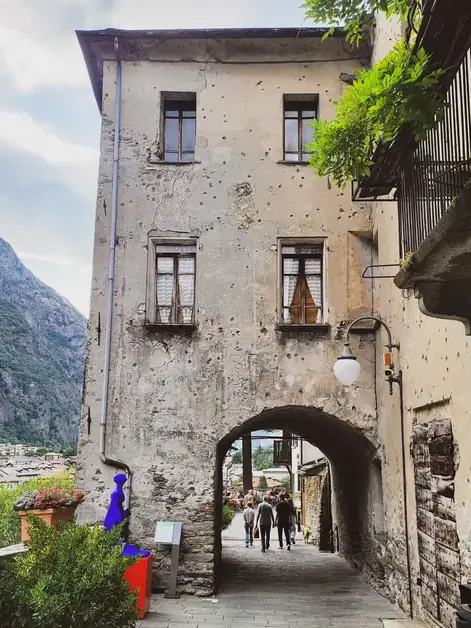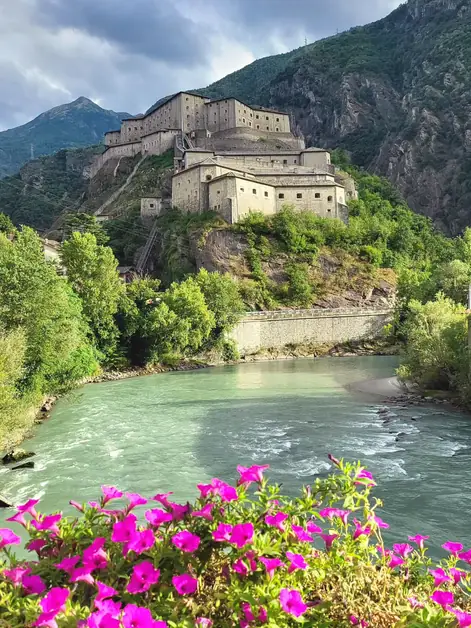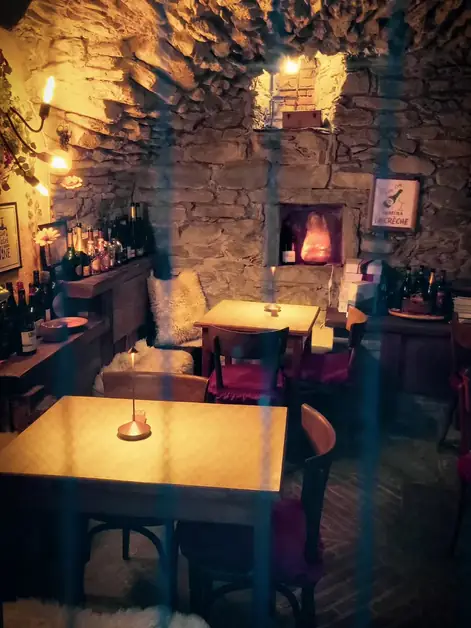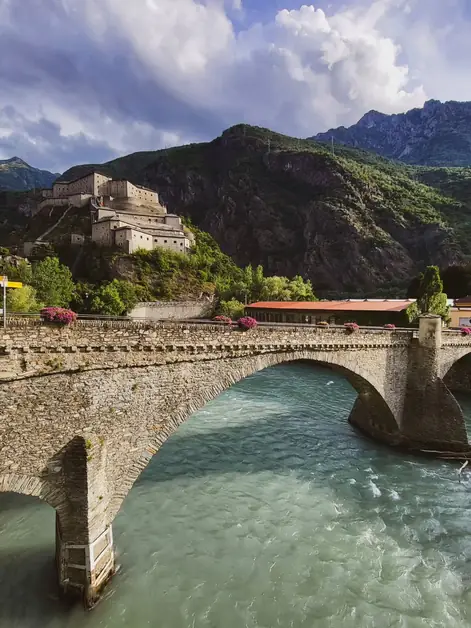Mountain Huts in Aosta Valley for Nature and Cuisine
Explore the best mountain huts in Aosta Valley for nature and traditional cuisine.
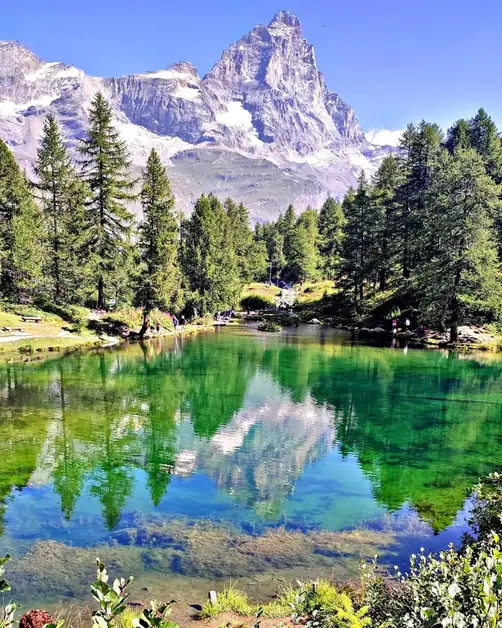
What are the best mountain huts in Aosta Valley?
Every time I return to Aosta Valley, I try to alternate high-altitude hikes, stops at alpine huts, and moments of discovery related to traditional Aosta Valley cuisine and customs. In just a few days, it's possible to build a varied mountain itinerary that combines nature, alpine views, and local flavors. This time I chose to explore famous huts, a little-known lake, a spectacular dam, and small villages rich in identity.
How to reach Rifugio Mont Fallère?
I started from Rifugio Mont Fallère, above Saint-Pierre. The ascent begins among woods and pastures and gradually opens up to a panorama that spans from Mont Blanc to Gran Paradiso. Along the way, you encounter wooden sculptures placed along the path, a detail that makes the walk pleasant and surprising. Upon arriving at the hut, the atmosphere is welcoming, and the view of the surrounding peaks is vast. I had lunch with traditional Aosta Valley dishes, sitting on the outdoor terrace while my dog rested in the shade.
What are the practical details about Rifugio Mont Fallère?
Altitude: 2,385 meters
Starting point: Saint-Pierre
Travel time: 2-3 hours
Difficulty: Medium
Open: June-September
Where is Rifugio Deffeyes in La Thuile?
The next day, I chose Rifugio Deffeyes, a starting point for those wanting to explore the Rutor glacier. The ascent from La Joux is quite long, but it is accompanied by the sound of the Rutor waterfalls cascading down the valley. The hut appears almost suddenly, nestled between tall mountains and rocky walls. From here, the gaze spans alpine ponds and tongues of ice. I decided to stay overnight: the dinner shared with other hikers and the silence that descends after sunset were intense moments.
What are the details of Rifugio Deffeyes?
Altitude: 2,479 meters
Specialty: View of the Rutor glacier
Bedding: 40
Reservation: Recommended in high season
What to see at Place Moulin Dam in Valpelline?
On another day, I reached Valpelline, where the Place Moulin dam is located. The imposing structure impresses upon arrival, but the real surprise is the turquoise color of the artificial lake. I walked along the path that runs alongside the lake, with water on one side and woods on the other. My dog ran through the meadows and often stopped to cool off. The hike is accessible and offers continuous glimpses of the mountains reflected in the water mirror.
What are the characteristics of Place Moulin Dam?
Dam height: 155 meters
Capacity: 31 million cubic meters
Difficulty of the path: Easy
Time: 1-2 hours round trip
Ideal for: Families with children
Where is Lake Frudière in Val d'Ayas?
I then discovered Lake Frudière, in Val d'Ayas. The ascent begins among larch woods and leads, after a bit of effort, to a small body of water surrounded by peaks. The atmosphere is tranquil, far from the most frequented tourist spots. I chose to stop by the lake for a packed lunch, enjoying the silence interrupted only by the wind. It's one of those places that rewards simplicity: water, sky, and mountains in perfect balance.
What are the details about Lake Frudière?
Altitude: 2,307 meters
Starting point: Brusson - Estoul area
Duration: 2.5-3 hours one way
View: Monte Rosa and glaciers
What does Rifugio Mario Bezzi in Valgrisenche offer?
Another stop was Valgrisenche, where Rifugio Mario Bezzi is located. The approach path is longer than to other huts, but the landscape accompanies each step. The hut stands in a wide basin, with meadows and streams flowing nearby. Inside, the environment is spartan but warm. I dined on typical Aosta Valley dishes, sharing the table with other travelers. What strikes is the feeling of being in an authentic corner, little touched by mass tourism.
What are the specifics of Rifugio Mario Bezzi?
Altitude: 2,284 meters
Access: From Bonne in Valgrisenche
Specialty: Traditional mountain cuisine
Environment: Intimate and family-friendly
What does Agriturismo La Tchavana in Ayas offer?
Between hikes, I also decided to stop at a farm. La Tchavana, above Ayas, is reachable after a short walk and immediately gives the feeling of being in a genuine place. The cows grazing, the smell of hay, and the dishes served at the table tell a tradition that is still alive here. I tasted cheeses produced on-site, accompanied by dark bread and mountain honey. It was a simple stop, but very significant to understand the bond between the community and the mountains.
What are the typical products of La Tchavana?
Cheeses: Fontina DOP, fresh tomes
Specialty: Dark rye bread
Honey: Own production
Experience: Educational farm
What can be discovered in the Lys Valley?
I dedicated a day to the Lys Valley, which starts from Pont-Saint-Martin and rises to Gressoney. Along the way, I found villages with wooden and stone Walser houses, flowered balconies, and small museums that tell the Walser culture. In every village, a strong identity is felt, which resists despite time. Walking through the streets of Gressoney-Saint-Jean, I felt the blend of alpine tradition and external influences. It is a valley that surprises for its cultural variety as well as its landscape.
What are the attractions of the Lys Valley?
Gressoney-Saint-Jean: Walser culture center
Architecture: Traditional wooden houses
Museums: Local history and traditions
Languages: Italian, French, Walser
What are the typical dishes of Aosta Valley?
The trip would not have been complete without moments dedicated to traditional food. In a mountain restaurant, I ordered polenta concia, served steaming with local cheeses. The dense consistency and intense flavor made the meal perfect after a long hike. On another occasion, I tried tartiflette, a dish of Savoyard origin but very widespread here. Potatoes, onions, and melted cheese: a simple but very caloric combination, ideal on cooler days. Eating these traditional dishes at altitude, perhaps near the fire, made the experience even more memorable.
What are the typical ingredients of Aosta Valley cuisine?
Fontina DOP: The main cheese of the region
Lardo d'Arnad: Typical aged salami
Dark bread: Rye, Walser tradition
Honey: Local alpine production
When is the best season to visit the huts?
Summer: June-September (all huts open)
Spring: May (low-altitude huts)
Autumn: October (variable conditions)
What are the practical tips for alpine huts?
Reservation: Always recommended
Equipment: Boots, waterproof jacket
Food: Sleeping bag in some huts
Dogs: Always check admission
What is the average budget for huts in Aosta Valley?
Accommodation: €25-45 per person
Dinner: €20-30
Lunch: €15-25
Total daily: €60-100 per person
What makes Aosta Valley authentic?
In just a few days, I gathered very different experiences: the ascent to panoramic huts, the calm of a secluded lake, the majesty of a dam, the warmth of a farm, the villages with their identity, the dishes that tell the mountain. Aosta Valley revealed itself as a collection of places that do not need grand presentations, but only to be lived slowly, step by step. A territory that offers authentic experiences far from mass tourism, where every hut, every lake, every traditional dish tells a mountain story.
